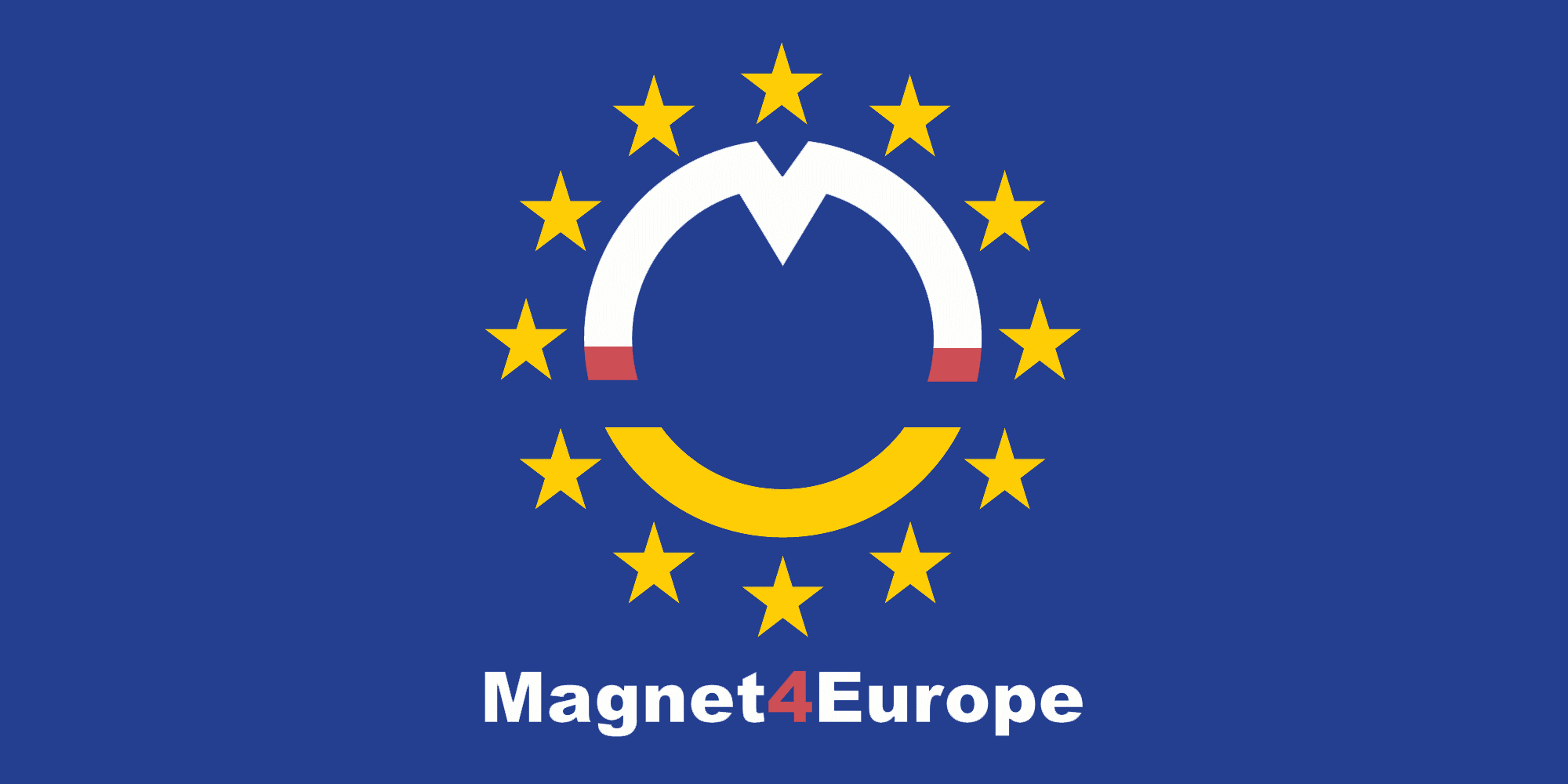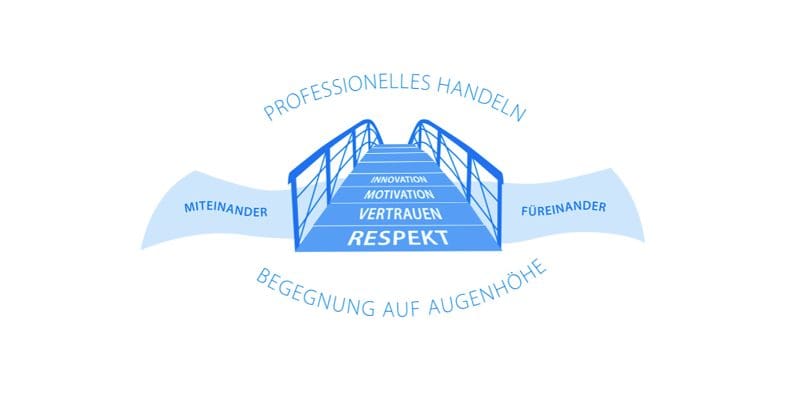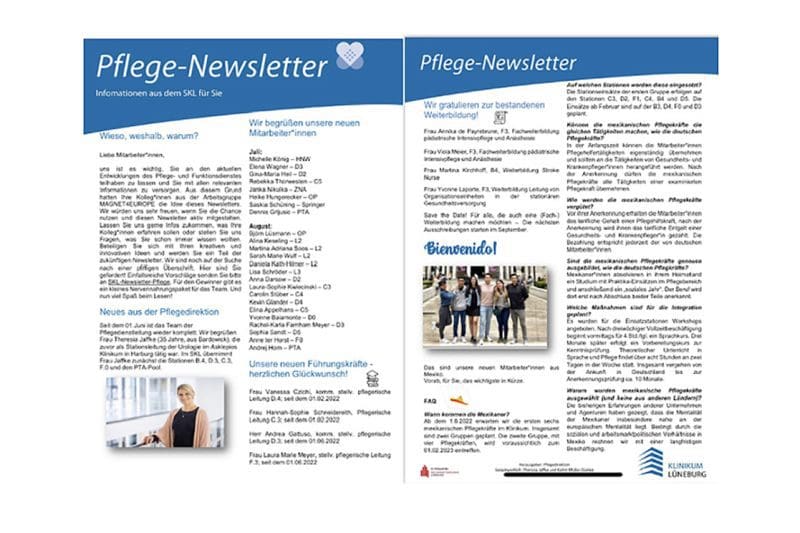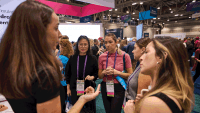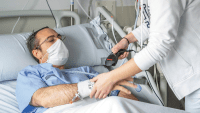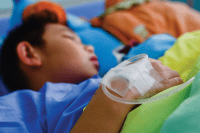- The Magnet4Europe program aims to improve the mental health and well-being of European health professionals and improve patient outcomes by redesigning work environments.
- A collaboration between nurses at a hospital in New Jersey and nurses at a hospital in Germany worked to establish a Magnet council, develop a professional practice model, and create other strategies for improvement.
Magnet4Europe (M4E), a European Union (EU)-funded project, includes more than 60 hospitals in six European countries (Belgium, Germany, Ireland, Norway, Sweden, and the United Kingdom) and 67 U.S. Magnet-designated hospitals. It aims to improve the mental health and well-being of European health professionals and improve patient outcomes by redesigning healthcare clinic work environments. Interventions include following the Magnet blueprint, implementing the M4E Gap Analysis Tool (adapted from the American Nurses Credentialing Center [ANCC] Magnet Gap Analysis Tool), partnering with an experienced U.S. Magnet-designated hospital, participating in learning collaboratives to share best practices, building critical mass, creating networks, and providing actionable feedback.
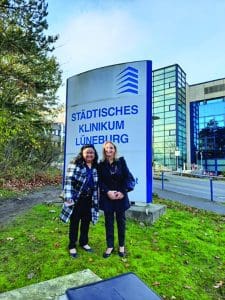

Deliberately introducing the core Magnet principlesTransformational Leadership; Structural Empowerment; Exemplary Professional Practice; New Knowledge, Innovation, and Improvements; and Empirical Outcomes can aid creation of a positive and healthy environment that empowers nurses to influence patient outcomes and experiences and their own nursing practice centered on evidence-based research and innovation. Building this solid foundation can aid progression to a culture of shared decision-making, education, and support for nurses autonomy at the bedside. Once established, this culture can help shape better patient and staff outcomes and improve the work environment, leading to improved RN satisfaction, recruitment, and retention and reduced vacancy and turnover rates.
Establishing a partnership
In November 2020, Klinikum Lneburg (KL) in Lneburg, Germany, partnered (twinned) with a Magnet-designated U.S. hospital, Hackensack Meridian-Jersey Shore University Medical Center (HM-JSUMC) located in Neptune, New Jersey. KL, a 512-bed inpatient hospital with around 750 nurses, admits approximately 30,000 inpatients and performs 10,850 surgeries annually. HM-JSUMC, a 630-bed inpatient academic and trauma center with 1,394 nurses, 1,257 physicians, and 4,310 additional team members, has around 33,355 patient admissions and 389,753 outpatient visits annually.
The first few months of the collaborative focused on the twinning process, learning the elements of the M4E Gap Analysis Tool, and introducing the KL team to Magnet resources and designation standards. In July 2021, the HM-JSUMC and KL teams had an initial virtual meeting, and KL announced the partnership on its website. Next, the partners held monthly meetings to perform the gap analysis with the goal of identifying whats in place, whats missing, and opportunities for improvement. According to Sermeus and colleagues, gap analysis results can aid planning and prioritization of hospital-specific interventions.
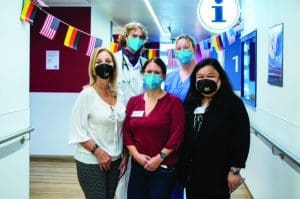

The key areas requiring assessment included eligibility requirements, organizational overview, and the five Magnet components. An important identified gap was the lack of national benchmarks in the EU to enable hospital performance comparisons. In addition, the United States and the EU have different educational degree equivalents and national nursing specialty certifications. These gaps had been identified in all M4E twinnings, so the Magnet Program Office had developed international interpretations to help EU hospitals meet the standards. To aid understanding of the Magnet standards and principles, the KL and HM-JSUMC teams used various strategies, including one-on-one discussions; group presentations; sharing of best practices, policies, and tools; virtual observations; and council and committee meetings.
Significant accomplishments
The partnership between KL and HM-JSUMC resulted in several significant accomplishments, including the creation of a Magnet Council, development of a professional practice model (PPM), and a newsletter.
Magnet Council
To address priorities identified in the M4E gap analysis and introduce the KL team to the Magnet culture and embed it in their organization, HM-JSUMC helped them form a Magnet Council. As the KL Magnet program director introduced Magnet principles to her team, she recruited nurses and other professionals who showed interest, passion, and commitment to serve on the council and act as Magnet ambassadors and champions. Currently, the 12 active council members include clinical nurses, nurse managers, and nurse directors from various departments as well as three physicians. The council meets monthly to review the status of priorities and what they need to move forward.
Professional practice model
In November 2021, the KL team met to create their PPM and align it with the organizations overall strategic goals and priorities and the nursing departments strategic plans. They agreed on six keywords to emphasize in their PPM: respect, trust, motivation, innovation, professionalism, and teamwork. The team chose an illustration of a bridge (to signify an iconic bridge over the Ilmenau River, the biggest river in Lneburg) to connect the six keywords and represent their journey and progress toward achieving their goals and priorities. The words miteinander and fureinander, which mean for each other and with each other, further emphasize partnership and collaboration, with the key message that theyre taking this journey together and relying on each others strength, commitment, and passion. (See Bridging the journey.)
The ANCC 2023 Magnet Application Manual defines PPM as a schematic description of a system, theory or phenomenon that depicts how nurses practice, collaborate, communicate and develop professionally to provide the highest-quality care for those served by the organization. All Magnet-designated organizations are required to have a PPM, so creating KLs PPM is a vital step in the Magnet journey. Ensuring that nurses actively participate in its development serves as a representation of Structural Empowerment and Exemplary Professional Practice.
After creating the PPM, the KL team began educating every nurse in the organization about its significance, its relationship to the organizations strategic priorities, and how it represents nurses key values and daily practice. Every nurse should be able to relate to the PPM and actively participate as it evolves to reflect changes in the organization, nurses values, and the nursing profession as a whole.
Newsletter
To enhance communication and keep nurses and other employees informed about the organization, the KL team created a newsletter. They also deploy the newsletter to recognize nurses, celebrate work anniversaries, and welcome new hires, including nurses from Mexico. Members of the Magnet Council help identify and develop topics to cover in the newsletter. (See Spreading the news.)
Site visit
After completing the gap analysis, the twinned hospitals decided to conduct an on-site visit for an assessment of organizational resources and determine progress in addressing identified gaps. Travel restrictions during the height of the pandemic delayed the visit, but on November 6, 2022, two HM-JSUMC representatives left for Germany to spend 4 days at KL.
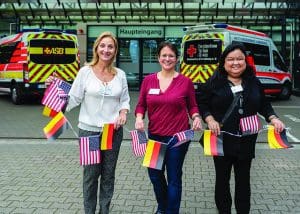

The HM-JSUMC team began their visit with a COVID test and by signing KLs privacy and confidentiality agreement. The daily agenda included meetings, hospital tours, unit rounds and observations, group presentations, off-site facility tours, and interviews with a journalist. Meetings included those with the chief executive officer, chief medical officer, chief nursing officer (CNO), the nursing leadership team, the Magnet Council, quality management personnel, patient safety team members, and the workers council head. Key discussion points included the following:
- Challenges precipitated by the pandemic and nursing shortage
- The image of nursing in Germany
- Recruitment efforts, staffing, and nursepatient ratios
- Funding and budgetary challenges
- Nursephysician relationships
- Metric reporting for quality, patient satisfaction, and RN satisfaction
Discussions revealed that leadership, interdisciplinary teams, and nurses strongly supported efforts to improve the work environment and incorporate the Magnet culture. Key features that contributed to success of their Magnet initiative included a dedicated Magnet Program Director to lead initiatives and act as a point person for the M4E collaborative; physicians as active members of the Magnet Council; and a nurse-led workers council to represent and advocate for all employees.
Introductions
During the open forum attended by all nurses, HM-JSUMC representatives presented information about their organization, Magnet, and M4E. They answered questions from the audience about topics ranging from staffing ratios and nursephysician relationships to benefits, sick leave coverage, and U.S. hospitals, units, and beds.
The KL CNO and three directors presented the history and background of their organization to the U.S. representatives. They also described education, training, and nursing in Germany; nursing management and staffing; and their nursing shortage experience and recruitment efforts. KL has the advantage of its own nursing school with medical-surgical and psychiatric specialties. From their first to third year of schooling, students spend time training in the hospital, which familiarizes them with the hospital, units, and staff.
Unit rounding
The HM-JSUMC team rounded on several units, including intensive care, pediatrics, surgical, geriatrics, and the emergency department. Key discussion points included staffing, scheduling, shifts, sick leave coverage, nursepatient ratios, nurse managers roles and responsibilities, nurses functions and responsibilities, nursephysician relationships and collaboration, new staff orientation, workplace violence, ancillary staff, medication administration, documentation, resources, and workflow.
Each unit has a dedicated wound care nurse, a unit secretary to organize patients paper charts, and a transport aide to help move patients for procedures and to bring specimens to the lab. In the newer units, all patient rooms are positioned on the left side of the hallway, with common areas for medication, equipment, and visitor and staff lounges on the right. This layout allows for more efficient workflow and enhances patient safety.
The HM-JSUMC team witnessed strong collaboration during emergency responses, with the critical care nurses serving as additional resources during codes, strokes, heart attacks, and trauma. KL also had recently updated its electronic documentation and helipad, and created an evidence-based geriatric unit design. In addition, the intensive care units include equipment designed for easy nurse and patient access. Ongoing construction includes relocating and expanding the pediatric and intensive care units.
Sharing strategies
The KL team shared information about a nursing leadership project aimed at ensuring safe patient care and adequate staffing to cover call-outs and sick leave, especially during the pandemic. Led by the CNO and the deputy (assistant CNO), they created a plan and formed four groups of nurses to meet staffing needs. The nurse directors and nurse managers meet every morning to determine which unit is short-staffed or could benefit from an additional nurse. This approach, which helps nurses feel supported by nursing leadership, has increased nurse satisfaction. (See Staff support groups.)
Staff support groups
Klinikum Lüneburg addresses staff issues using four groups of nurses:
- Day Pool Nurses report from 8:30 am to 12:30 pm and are allocated to the units that need the most help and are short-staffed for the shift.
- Evening Pool Nurses or “Joker Shift” reports from 1:45 pm to 9:45 pm and are allocated to the units that need the most help and are short-staffed for the shift.
- Night-Shift Nurses report from 9:30 pm to 6:00 am, cover break time, and help transport critical patients to the operating room and emergency care units.
- Stand-By Shift includes nurses who are off for the day but have signed up to be on-call from 1:45 pm to 9:45 pm. They receive on-call pay if they’re not called into work and full pay if they are called in.
Next steps
The 4-day visit to Germany made clear that regardless of geographic location, many hospitals continue to experience similar challenges resulting from the pandemic and nursing shortage. Addressing recruitment and retention issues could start with efforts to improve the work environment via rewards and recognition, team-building efforts to enhance nursephysician collaboration, exploring additional ancillary support staff (certified nurse assistants or patient care technicians) to help ease the nurses workloads, and performing a salary and benefits market analysis to make nurses compensation comparable and competitive with other professions in Germany. Recruitment efforts also could include internal employees, such as transport aides, housekeeping, kitchen employees, volunteers, and security, who are already familiar with the hospital environment and workflow. Internal employees can be offered flexibility in schedules, paid observation rotation in hospital units and schools, and scholarship or financial support for schooling.
Performing a nurse engagement and satisfaction survey could help the KL team identify needs and obtain feedback about specific issues that influence the work environment. Potential questions include nursenurse interaction, nursephysician (and other discipline) relationships, professional development access and opportunities, perception of the care they provide, autonomy, leadership access and responsiveness, and resource and staffing adequacy.
KL also could expand the collection, reporting, and benchmarking of quality outcome metrics, including those for patient falls, falls with injury, hospital-acquired injuries, catheter-associated urinary tract infections, and central lineassociated bloodstream infection. Patient satisfaction surveys also should be expanded. In addition, if KL gives nurses access to quality reports and hospital performance, they can actively participate in improvement action plans.
To empower and engage nurses, The KL team can explore training and education related to performance improvement or evidence-based projects and research. Benchmarking performance using third-party vendors isnt currently available in Europe, but Germany has started to consider benchmarking quality outcome metrics. KL awaits finalization of this initiative so they can participate and benchmark their performance. (See Implementing Magnet components.)
Calls to address the mental health and well-being of nurses and other healthcare workers has intensified as a result of the pandemics emotional toll. The nursing shortage increased that stress and further stretched resources. Promoting healthy work environments that support and empower nurses in patient care can help retain and recruit nurses. Ultimately, initiatives that aim to improve nurses mental health and well-being and promote a healthy work environment will help address nurse satisfaction, the nursing shortage, the patient experience, and outcomes.
Camaraderie and support
The 4-day site visit allowed KL and HM-JSUMC to share best practices and work together to identify the best solutions for tackling common challenges. Most significantly, the teams have developed a strong relationship and sense of camaraderie. Spending time together made evident the universality of nursing with the common goal of serving patients. Nurses from around the world must work together to improve the work environment, the mental health and well-being of nurses, and the outcomes of the entire healthcare team. The two teams will continue to support each other, provide assistance, and cheer each other on as they navigate healthcares ever-changing landscape.
Rocel dela Rosa-Besa is the Magnet program director at Hackensack Meridian Jersey Shore University Medical Center in Neptune, New Jersey. Lisa Guinta is the Magnet designation director at Hackensack Meridian Jersey Shore University Medical Center. Katrin Mueller-Duemke, is the Director Stdtisches Klinikum Lneburg gemeinntzige GmbH in Lneburg, Germany
American Nurse Journal. 2023; 18(6). Doi: 10.51256/ANJ062338
References
American Nurses Credentialing Center. 2023 Magnet® Application Manual. Washington, DC: American Nurses Credentialing Center; 2021. Magnet4Europe. magnet4europe.eu
Munro CL, Hope AA. Improving nurse well-being: The need is urgent and the time is now. Am J Crit Care. 2022;31(1):4-6. doi:10.4037/ajcc2022603
Press Ganey. Nursing excellence. members.nursingquality.org
Reich J, Fruecht N, Summer V, Van den Hooven T, Mattioni C, Aiken LH. Partnering for nursing advancement. Am Nurse J. 2023;18(1):46-9. doi:10.51256/ANJ012346
Sermeus W, Aiken LH, Ball J, et al. A workplace organisational intervention to improve hospital nurses’ and physicians’ mental health: Study protocol for the Magnet4Europe wait list cluster randomised controlled trial. BMJ Open. 2022;12(7):e059159. doi:10.1136/bmjopen-2021-059159
Key words: Magnet, Magnet4Europe, collaboration, professional practice model

